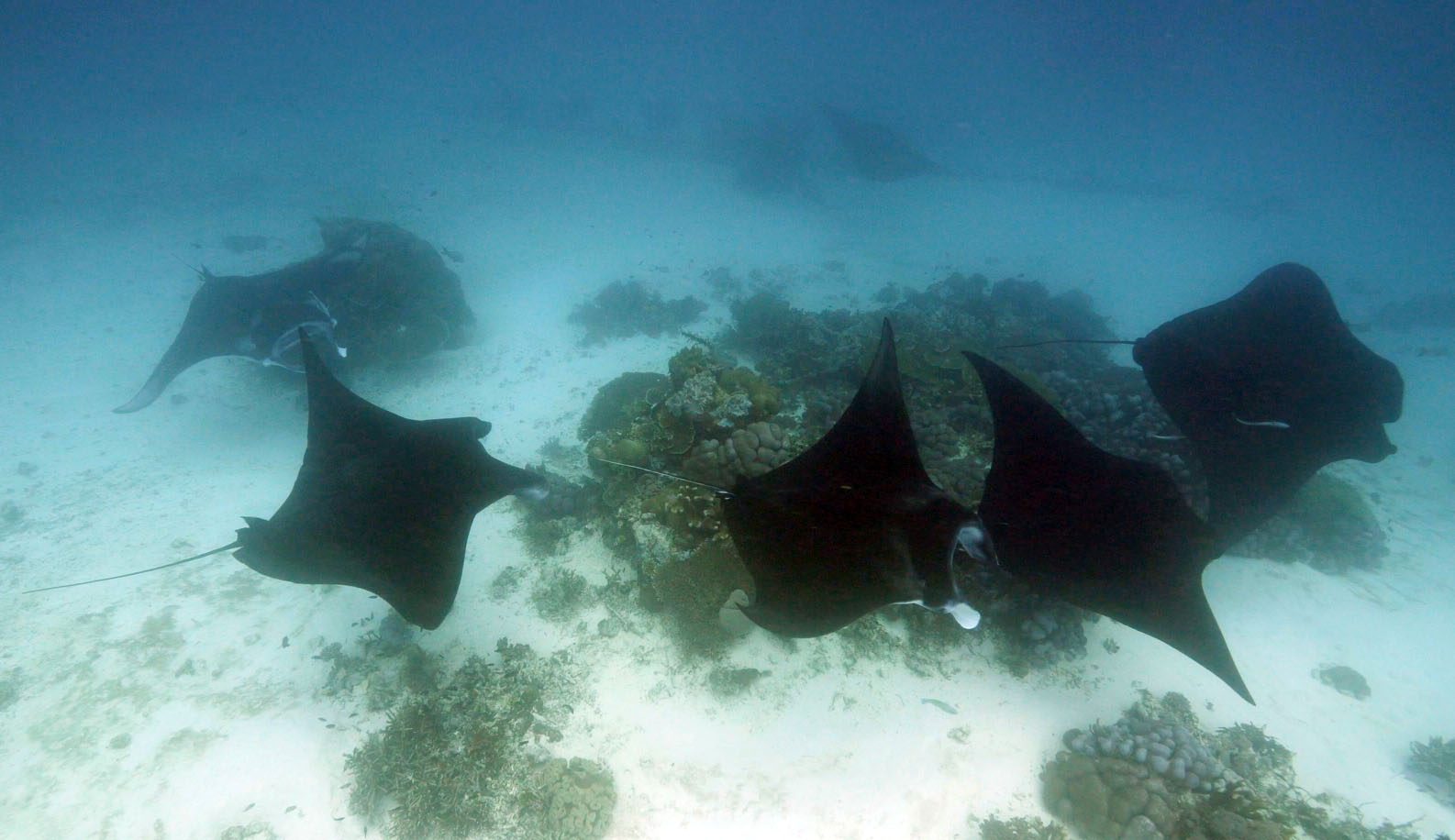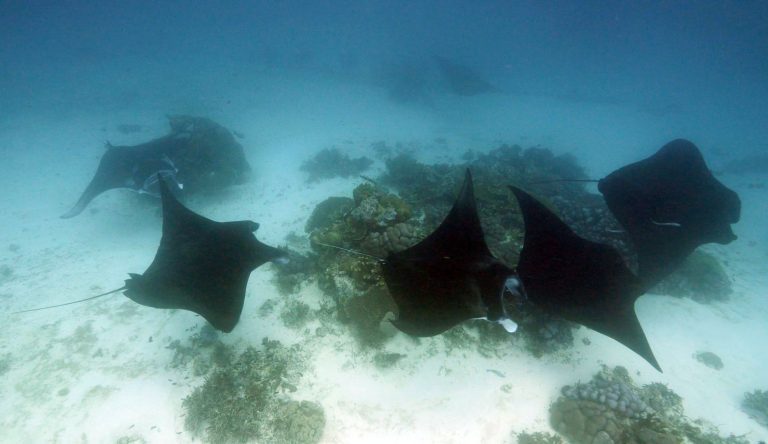DIVING NEWS
How mantas make friends

Picture: Rob Perryman / MMF
Manta rays form social relationships and actively choose their social partners, according to a new study that claims to be the first to describe such bonds.
The research, published today (22 August) by scientists from the Marine Megafauna Foundation (MMF), Macquarie University, University of Papua, and University of York, suggests that far from being solitary creatures, reef mantas typically form groups that meet up at shallow-water feeding and cleaning sites.
Studying more than 500 such groups in Indonesia’s Raja Ampat marine park over five years, the researchers took identification photos of all rays present in each group, and monitored whether individuals were more likely to be seen together at different times and in different locations than might be expected if their encounters were random.
They identified two distinct but connected social communities living together. One consisted mainly of mature females, while the other was a mixture of males, females and juveniles.
Analysis indicated that these communities contained a web of many weak acquaintances but with some stronger, longer-lasting relationships. Females tended to forge long-term bonds with other females, but males made few strong connections, which the team put down to their “different reproductive strategies or dispersal patterns”.
22 August 2019
Location seemed to be important to the mantas’ social groupings. The researchers were surprised to find rays returning regularly to particular cleaning stations, given their mobility and the fact that all the sites lay close together, and concluded that groups used them as meeting points.
“Like dolphins, manta rays are intelligent and perform collective behaviours such as foraging and playing,” said lead author Rob Perryman, an MMF researcher and PhD student at Macquarie.
“They are curious, often approaching humans, and individuals appear to have different personalities. It turns out that reef manta rays actively choose to group with preferred social partners.
“We still understand very little of how mantas live their lives, but we know they are socially interactive, and these interactions seem important to the structure of their populations,” said Perryman, adding that understanding their relationships could help predict mantas’ movements, mating patterns and responses to human impacts.
“Knowing how mantas interact is important, particularly in areas where they are susceptible to increasing dive tourism,” said Dr Andrea Marshall, MMF principal scientist.
“The increasing number of boats and scuba divers around reef mantas in Raja Ampat, particularly at cleaning stations, could break apart their social structures and have impacts on their reproduction.”
Manta rays have been protected in Indonesia since 2014.
The study is published in Behavioral Ecology and Sociobiology.

